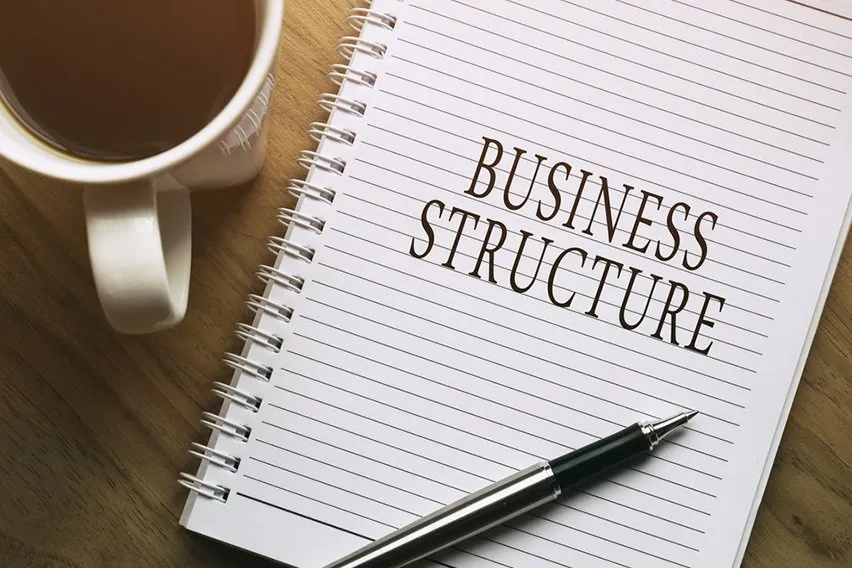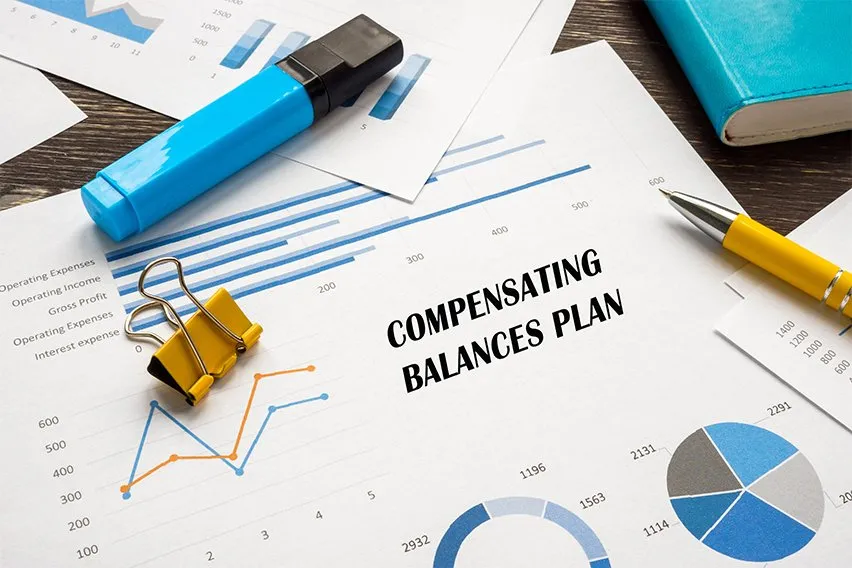Business Structures Advantages and Disadvantages

Are you just starting out in business? Or have you been around for a while and are looking for a bit of a change? Regardless of the stage you’re at, one of the biggest decisions you’re going to make is the type of business structure you will have.
The type of business structure that you choose is going to have certain advantages and disadvantages. It’s all going to depend on the type of business that you’re going to operate and the industry that you’re in. For example, one business structure can work best for entrepreneurs. Whereas another might work best for a charitable organization.
Depending on which way you go, different business structures are going to have certain tax implications. Plus, they will affect how you actually register your business. Making this decision before you register your business is important.
There are going to be different steps in the registration process and there can also be some different legal requirements. In Australia, there are four main choices for company structure.
Let’s take a closer look at each of them and their advantages and disadvantages.
Here’s What We’ll Cover:
Business Structures in Australia: Advantages and Disadvantages
What Is a Business Structure?
As a small business owner in Australia, one of the first things that you’re going to do is decide on the business structure you’re going to operate under. And there are four main types of business structures. They are:
- A sole trader
- A partnership
- A company
- A trust

It’s important to make this decision before you actually start operating. This is because the business structure you choose can affect a few different things. Some of the biggest things that your business structure will affect are:
- Certain ongoing reporting requirements that you must follow
- How much tax you’re going to have to pay
- Varying business set up costs and fees
- The overall way in which your business is going to operate
- Legal liability
It was mentioned above but it can’t get stressed enough. Choosing the right business structure is going to be one of the most important decisions that you make. If you choose a business structure that doesn’t fit with your operations, it can have negative and unintended consequences.
You might pay extra set-up fees or end up paying more tax than you’re supposed to or should. As well, you might miss or overlook reporting requirements or have legal liability you weren’t prepared for.
Business Structures in Australia: Advantages and Disadvantages
Below you will find a full guide on the business structures in Australia. Included will be all of the advantages and disadvantages of each. This way, you can make a much more informed decision that will allow your business to succeed.
Sole Trader Business Structure
Being a sole trader in Australia is often the simplest type of business to form and operate. A sole trader business structure is formed when one individual owns the business. They also become legally responsible for anything that the business does.
One of the greatest things about being a sole trader is that you’re going to make all the decisions. This can be a great option if you have distinct business goals and an overall vision for where you want to go. You won’t have to compromise with anyone else or vote on certain decisions.
This can range from how many people you are going to employ and where you’re going to be located. Plus, any decisions around things like accounting, marketing and advertising and products and services are made by you.
When it comes to tax liability, you end up paying tax as an individual for any income that you earn. As well, you’re required to pay GST and submit business activity statements.
That said, you only need to submit a business activity statement if you have an annual turnover of more than $75,000.
Advantages
- Extremely easy to set up and maintain compared to other business structures
- You are the decision-maker, meaning you have complete control over your business
- Any profit that gets earned, you’re able to retain
- It can be easy to change the business structure at a later date if you need to
- Set up costs are relatively low and there aren’t many legal procedures
- It can be easy to disband a sole trader business structure if needed
- There can be greater privacy when it comes to your overall operations
Disadvantages
- You become personally liable for any debts the business incurs
- This means that your personal assets become at risk, such as a car or house
- Tax gets paid at the highest marginal individual income bracket when you’re annual turnover is greater than $75,000
- It can be harder to obtain financing, such as loans or lines of credit
- You’re responsible for paying workers compensation, superannuation and any other employee entitlements
Partnership Business Structure
A partnership business structure is formed with two or more individuals. And both individuals become co-owners of the business. This can be a good option if you have someone that you know you want to go into business with.
You can pool assets together and combine all your skills to increase the possibility of business success. Plus, you’re able to hire additional employees to help run and operate your business.
When it comes to tax liability, partners pay their taxes as individuals. And you would do this with any income that’s been generated from the business. Similar to a sole trader, you’re required to pay GST and submit business activity statements when annual turnover exceeds $75,000.
Advantages
- It can be simple and easy to set up and maintain
- Having additional owners or partners allows for new capital investment
- Adding employees to the business can help increase the knowledge and skills, helping lead to success
- It can be fairly easy to change the business structure if needed
Disadvantages
- You need to create a partnership agreement that outlines rights and obligations, which can be expensive and time-consuming
- There is shared control of the business, which means making decisions can be more difficult
- Partners are personally liable for any debts that the business incurs
- As you generate more revenue, you will pay tax at the highest marginal individual income tax bracket
- Disagreements among partners can cause friction and disruption in business operations
Company Business Structure
To form a company, you need to register your business with the Australian Securities and Investments Commission (ASIC). When you do this, the business becomes a separate legal entity from you as an individual business owner. This means that your business can own assets and enter into third-party contracts.
There are different tax rates and liabilities for companies compared to individual tax rates. Depending on certain criteria, the company tax rate can be either 27.5% or 30%. Plus, you’re still required to pay GST when your turnover exceeds $75,000 per year.
Advantages
- There becomes reduced personal responsibility for any business debts incurred
- Legal liability also becomes reduced since a company is a separate legal entity from you as an individual
- Company tax rates are lower compared to higher marginal tax rates
- It can be much easier to raise finance and capital to grow and expand your business
Disadvantages
- The business operations become controlled by directors
- There can be higher setup costs that come with incorporating your business
- Reporting, paperwork and ongoing compliance can be difficult to stay on top of
- You need to comply with any and all obligations outlined under the Corporations Act 2001
- You must lodge an annual company tax return with the Australian Tax Office (ATO)

Trust Business Structure
In its simplest form, a trust is a form of business that can legally hold property or income for the sole benefit of others. Trustees can either be a company or an individual. And they become responsible for any debts or liabilities that are incurred.
Typically, a trust business is commonly used to help protect, manage and pass on family assets. These can range from personal property, the family business or shares, for example. But, there are a few things to know if you want to run your business through a trust.
It must involve a trustee that owns and operates the business’s assets. Plus, they must distribute the overall business income to any beneficiaries outlined in the trust deed.
For tax liability, the trustee would distribute business profits to the beneficiaries. They would then pay any tax on the income they receive. And this would get done under the marginal individual tax rates.
Advantages
- There is a limited personal responsibility for business debts and liabilities, as long as the trustee is a company
- Typically, trusts don’t pay tax as long as they distribute the profits to the beneficiaries
- Distributing profits to beneficiaries provides flexibility when it comes to individual tax
Disadvantages
- It can be much more expensive and complex to establish a trust compared to other business structures
- There is a limited lifespan, usually 80 years
- Once established it can be very difficult to dissolve or alter
Key Takeaways
There’s no perfect recipe for choosing the right business structure. The biggest thing to keep in mind is what will work best for your business. Certain types of businesses are going to benefit from one business structure over another.
The good news is that with structures such as partnerships and sole traders, they can be easy to switch. So if you decide after that your business needs to evolve, it can be easy to change the business structure.
Make sure that the business structure you choose suits your needs. Use the guide outlined above to weigh the advantages and disadvantages. You can make a more informed decision to help your business succeed in the future.
Did you enjoy reading this guide? Head over to our resource hub for more content!
RELATED ARTICLES

 What Is Residual Value & How to Calculate It?
What Is Residual Value & How to Calculate It? What Are Franked Dividends & How Does It Work?
What Are Franked Dividends & How Does It Work? The Complete Guide to Ceteris Paribus
The Complete Guide to Ceteris Paribus An Overview of Sensitivity Analysis
An Overview of Sensitivity Analysis What Is Compensating Balance? Definition & Example
What Is Compensating Balance? Definition & Example What Is an Oligopoly? Definition, Characteristics & Examples
What Is an Oligopoly? Definition, Characteristics & Examples